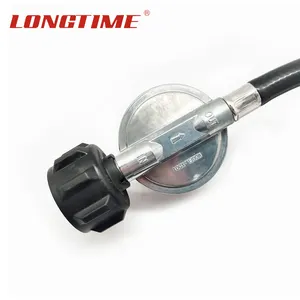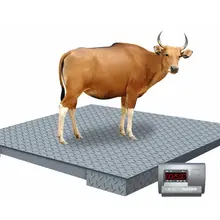A gas cylinder regulator is a meticulously engineered device tasked with delivering a stable flow and pressure of gas from a cylinder to its destination equipment. It plays a vital role in ensuring the safe and efficient management of gases across a spectrum of industries, including industrial, medical, and culinary sectors. Alibaba.com boasts an extensive array of gas cylinder regulators, catering to a diverse selection of gases such as oxygen, propane, and natural gas.
Types and Characteristics of Gas Cylinder Regulators
The realm of gas cylinder regulators encompasses a variety of models, each tailored with distinct features to satisfy particular operational demands. Single-stage regulators are apt for scenarios where a consistent outlet pressure is not paramount, whereas dual-stage regulators are indispensable for applications demanding a constant outlet pressure, regardless of variations in cylinder pressure. Regulators designed for corrosive gases, such as those with purge assemblies or Teflon diaphragms, offer enhanced functionality. For instance, a propane tank regulator is specifically crafted to manage propane's volatility, ensuring a steady flow for safe usage in heating and cooking devices. High-pressure regulators, utilized for gases like nitrogen or oxygen, are constructed to manage the intense output from high-pressure cylinders, providing a controlled and safe flow for industrial or healthcare applications.
Structure and Operation of Gas Cylinder Regulators
The architecture of a gas cylinder regulator comprises several pivotal components: the body, which encases the control mechanisms; the bonnet, home to the adjustment system; the diaphragm, which senses and reacts to pressure variations; and the valve seat, essential for sustaining the desired flow. In practice, the regulator receives high-pressure gas from the cylinder and, through the interplay of the diaphragm, a spring, and a valve, it modulates to preserve a uniform output pressure. An oxygen tank regulator, for example, incorporates precision elements to finely tune and monitor oxygen flow, a critical aspect in medical settings. The regulator must also endure the thermal dynamics of pressure transition from high to low, underscoring the importance of material selection and design.
Materials and Benefits in Gas Cylinder Regulators
The selection of materials for a gas cylinder regulator is pivotal to its efficacy and durability. Aluminum, known for its lightness and resistance to corrosion, is ideal for mobile gas systems. Zinc alloy and brass are synonymous with resilience and are frequently employed in high-pressure environments. Stainless steel stands as the preferred choice for handling corrosive gases, given its exceptional corrosion resistance. These materials extend the regulator's service life, ensure reliability under various conditions, and are compatible with a multitude of gases. For example, brass in a propane tank regulator not only guarantees robustness but also enhances safety with its non-sparking qualities, a crucial feature when dealing with combustible gases.
Applications and Business Usages of Gas Cylinder Regulators
Gas cylinder regulators are indispensable in sectors such as manufacturing, where precision in flame control is crucial for welding processes. In healthcare, devices like the oxygen bottle regulator are fundamental to patient respiratory systems. In the culinary realm, a propane tank regulator ensures the safe operation of stoves and grills by modulating gas flow. These regulators not only bolster safety but also drive cost-efficiency by optimizing gas consumption and minimizing waste. In scientific research, regulators must deliver exact and stable gas flows to guarantee experimental precision and researcher safety.
Functions and Tasks of Gas Cylinder Regulators
The principal role of a gas cylinder regulator is to supply gas at the requisite pressure and flow rate, while also safeguarding downstream apparatus from pressure surges. For instance, an lp tank regulator prevents an overabundance of propane flow that could result in fires or explosions. Some regulators come equipped with automatic shut-off capabilities that engage in the event of a hose rupture. The regulator also compensates for the diminishing pressure in the gas cylinder as the gas depletes, ensuring a steady output until the gas is fully expended.
Features and Unique Selling Points
Salient features of gas cylinder regulators include integrated pressure relief valves, gauges that are simple to interpret, and adjustment knobs that are user-friendly. A propane tank pressure regulator may feature an automatic changeover mechanism that toggles between two propane tanks, guaranteeing a continuous supply. These distinctive attributes set Alibaba.com's offerings apart from competitors, providing customers with customized solutions for their specific gas control requirements. Certain regulators also incorporate advanced safety systems such as thermal shutoffs, which further enhance safety by halting gas flow automatically in the event of a fire.
Benefits and Positive Outcomes
Employing a premium gas cylinder regulator yields significant advantages, including heightened safety, meticulous control over gas flow, and increased gas usage efficiency. For enterprises, this equates to safer work environments, consistent product quality, and diminished operational expenses. A gas regulator for propane tank ensures fuel is combusted efficiently, which is both cost-effective and beneficial for the environment. The precision control provided by these regulators also means that processes can be fine-tuned for peak productivity, curtailing downtime and amplifying output.
How does a gas cylinder regulator maintain safety?
A gas cylinder pressure regulator upholds safety by autonomously managing the gas pressure, averting fluctuations that could precipitate leaks or explosions. It serves as a safeguard, mediating between the high-pressure gas within the cylinder and the reduced pressure required for end-use. Elements such as safety valves in a propane bottle regulator add an extra layer of security by venting gas if the pressure climbs beyond safe thresholds.
What should be considered when choosing a gas cylinder regulator?
In the selection of a gas cylinder regulator, it is crucial to consider the gas type, necessary pressure, desired flow rate, and the operational environment. For instance, a propane tank pressure regulator for a commercial kitchen must adhere to different standards than an o2 tank regulator for a welding setup. It is also important to assess material compatibility, certifications, and the availability of essential features.
How to ensure the longevity of a gas cylinder regulator?
To guarantee the extended lifespan of a gas cylinder regulator, consistent maintenance is essential. This encompasses regular checks for wear and tear, component cleaning, and the replacement of worn parts. Proper storage and usage, as well as operating the regulator within its specified pressure and environmental parameters, are also vital to the endurance of an lp gas tank regulator or any other variant.






























 浙公网安备 33010002000092号
浙公网安备 33010002000092号 浙B2-20120091-4
浙B2-20120091-4